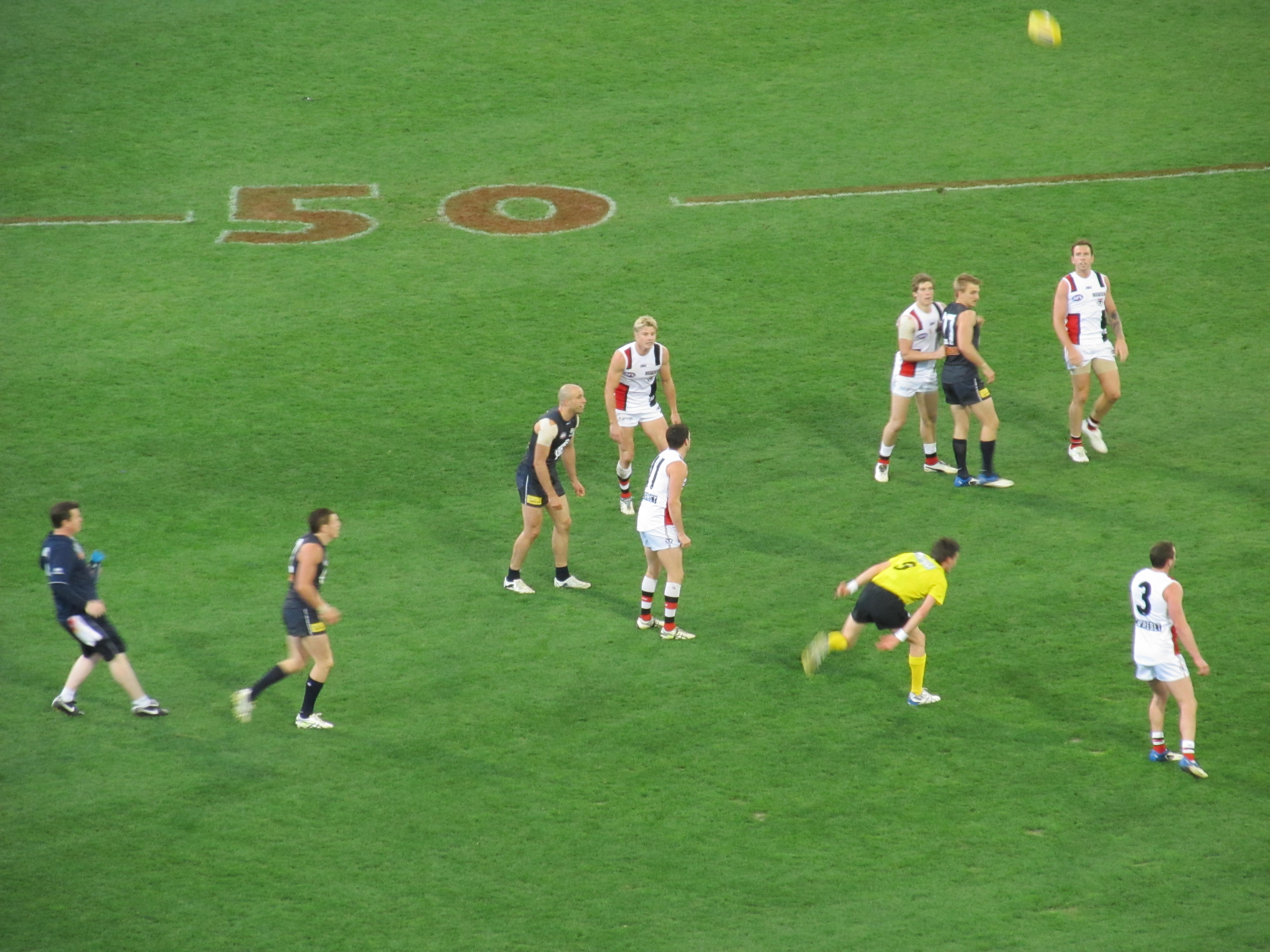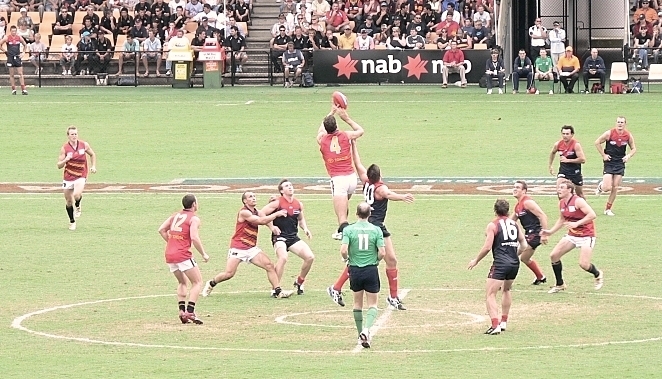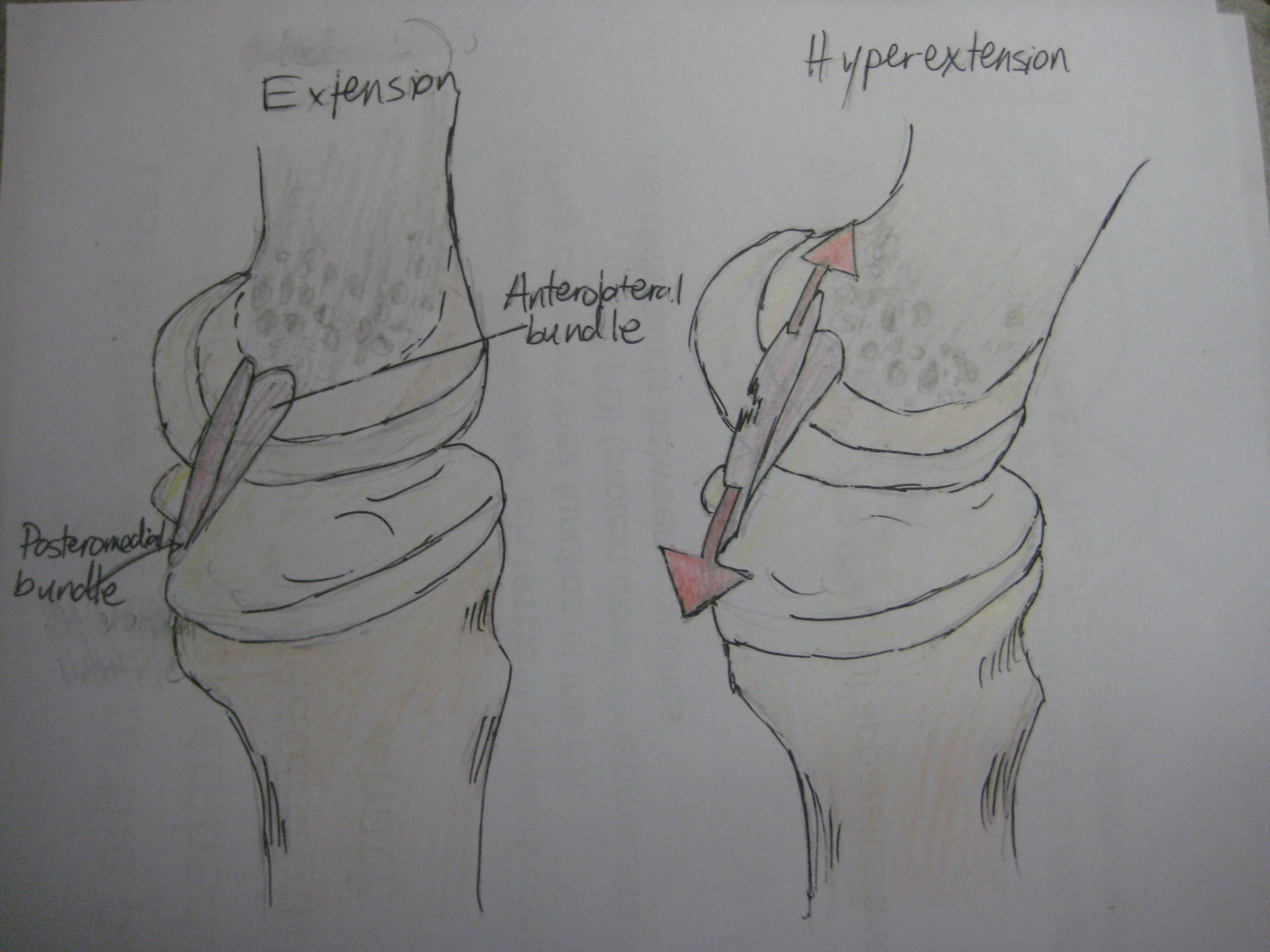|
Ball-up
A ball-up (pl. ball-ups) in Australian rules football is the method by which the field umpire restarts play at a neutral contest after a stoppage within the field of play. It involves the throwing or bouncing of the ball up between two players, known as rucks, who then attempt to win possession for their teams. A related type of contest, the boundary throw-in, occurs to restart play after the ball has gone out of bounds. It is governed by similar rules, although is not itself known as a ball-up. Ball-ups have been part of the Laws of the Game since 1872. Ball-ups are the equivalent of a jump ball, faceoff or dropped-ball from other team sports. Execution There are two means of executing a ball-up: a throw or a bounce. For a throw, the field umpire throws the ball vertically upwards. For a bounce, the umpire throws the ball firmly on the ground such that it bounces several metres up into the air approximately, although not always perfectly, vertically. In both cases, the b ... [...More Info...] [...Related Items...] OR: [Wikipedia] [Google] [Baidu] |
Australian Rules Football
Australian football, also called Australian rules football or Aussie rules, or more simply football or footy, is a contact sport played between two teams of 18 players on an oval field, often a modified cricket ground. Points are scored by kicking the oval ball between the central goal posts (worth six points), or between a central and outer post (worth one point, otherwise known as a "behind"). During general play, players may position themselves anywhere on the field and use any part of their bodies to move the ball. The primary methods are kicking, handballing and running with the ball. There are rules on how the ball can be handled; for example, players running with the ball must intermittently bounce or touch it on the ground. Throwing the ball is not allowed, and players must not get caught holding the ball. A distinctive feature of the game is the mark, where players anywhere on the field who catch the ball from a kick (with specific conditions) are awarded unimped ... [...More Info...] [...Related Items...] OR: [Wikipedia] [Google] [Baidu] |
Ruck (Australian Rules Football)
In Australian rules football, a ruckman or ruckwoman is typically a tall and athletic player who contests at centre bounces and stoppages (such as boundary throw-ins and ball-ups). The ruckman is one of the most important players on the field. They are often key to coaching strategy and winning centre clearances which result in the most goal kicking opportunities (inside 50s). The role of the ruckman in Australian rules is similar to a lock in rugby union contesting a line-out. The key differences are that with the exception of boundary throw-ins, the ball is almost always thrown straight up high into the air rather than horizontally, so in this respect, the ruckman is similar to a basketball centre. The ruckman needs to be able to control the ball by palm tap or fist with outstretched arms. Unlike rugby, the ruckman must rely vertical leap and can not be assisted by teammates to jump. Australian football rucking often involves vigorous mid-air collisions with the opposin ... [...More Info...] [...Related Items...] OR: [Wikipedia] [Google] [Baidu] |
Laws Of Australian Football
The laws of Australian rules football were first created by the Melbourne Football Club in 1859 and have been refined over the years as the sport evolved into its modern form. The laws significantly predate the advent of a governing body for the sport. The first national and international body, the Australasian Football Council (AFC), was formed in 1905 and became responsible for the laws, although individual leagues retained a wide discretion to vary them. Since 1994, after the establishment of a nation-wide Australian Football League (AFL), the rules for the game have been maintained by the AFL Commission through its AFL Competition Committee. Australian rules football is a contact sport played between two teams of eighteen players on an oval-shaped field, often a modified cricket ground. Points are scored by kicking the oval-shaped ball between goal posts (worth six points) or between behind posts (worth one point). During general play, players may position themselves an ... [...More Info...] [...Related Items...] OR: [Wikipedia] [Google] [Baidu] |
Shaun Rehn
Shaun Jason Rehn (born 17 August 1971) is a former professional Australian rules footballer who played for the Adelaide Football Club and the Hawthorn Football Club in the Australian Football League (AFL). Early career Rehn grew up on a farm near Arno Bay, South Australia, playing junior football for Arno Bay in the Eastern Eyre Football League. It wasn't until Rehn attended Immanuel College (Australia) that he believed he could play league football. Rehn was invited to try out for the West Adelaide Under 19s despite being from the Port Adelaide zone. He made his senior debut for West Adelaide in 1990, playing two games for the season; Rehn was then selected in the Adelaide Crows inaugural 52-man squad wearing number 52. AFL career At 19 Rehn started his AFL career in 1991 with the Adelaide Crows in their inaugural year in the Australian Football League. After some eye catching performances for West Adelaide (who were making a late season charge to the SANFL finals), he mad ... [...More Info...] [...Related Items...] OR: [Wikipedia] [Google] [Baidu] |
Faceoff
A face-off is the method used to begin and restart play after goals in some sports using sticks, primarily ice hockey, bandy, floorball, broomball, rinkball, and lacrosse. During a face-off, two teams line up in opposition to each other, and the opposing players attempt to gain control of the puck or ball after it is dropped or otherwise placed between their sticks by an official. Ice hockey Hockey face-offs (also called 'bully', and originally called 'puck-offs') are generally handled by centres, although some wingers handle face-offs and, very rarely, defensemen. One of the referees drops the puck at centre ice to start each period and following the scoring of a goal. The linesmen are responsible for all other face-offs. One player from each team stands at the face-off spot (see below) to await the drop of the puck. All teammates must be lateral to or behind the player taking the face-off. Generally, the goal of the player taking the face-off is to draw the puck backward, t ... [...More Info...] [...Related Items...] OR: [Wikipedia] [Google] [Baidu] |
Umpire (Australian Rules Football)
An umpire is an official in the sport of Australian rules football who adjudicates the game according to the " Laws Of The Game", the official handbook of Australian Rules Football. Umpiring the game of AFL across all leagues be it professional or juniors just starting have been subject to long history of abuse, in 2022 the AFL a long all the other associations have stepped up to help stamp out that abuse. Origins Unlike many other codes of football, where the official is called a ''referee'', in Australian rules football the officials are called umpires. Tom Wills, one of the founders of the Australian game, was the earliest known umpire of a football match in Australia. At first the captains of both teams shared the duty of officiating games, but as the game became more professional in the 1880s, umpires became an important aspect of the game. Abuse Banter and questioning the umpires decisions at events have been around the sport since the sport began. That questioning ha ... [...More Info...] [...Related Items...] OR: [Wikipedia] [Google] [Baidu] |
1999 Ansett Australia Cup
The 1999 AFL Ansett Australia Cup was the Australian Football League Pre-season Cup competition played in its entirety before the Australian Football League's 1999 Premiership Season began. It culminated the final in March 1999. Games Round of 16 , - bgcolor="#CCCCFF" , Home team , Home team score , Away team , Away team score , Ground , Crowd , Date , Time , - bgcolor="#FFFFFF" , , 7.8 (50) , , 14.12 (96) , Subiaco Oval , 12,088 , Thursday 11 February 1999 , 6:00 PM , - bgcolor="#FFFFFF" , , 12.15 (87) , , 4.4 (28) , The Gabba , 16,318 , Friday, 12 February 1999 , 7:00 PM , - bgcolor="#FFFFFF" , , 12.13 (85) , , 11.8 (74) , Manuka Oval , 13,313 , Saturday, 13 February 1999 , 5:00 PM , - bgcolor="#FFFFFF" , , 14.8 (92) , , 18.12 (120) , Marrara Oval , 14,211 , Saturday, 13 February 1999 , 6:00 PM , - bgcolor="#FFFFFF" , , 8.15 (63) , , 6.10 (46) , Waverley Park , 11,325 , Thursday, 18 February 1999 , 8:00 PM , - bgcol ... [...More Info...] [...Related Items...] OR: [Wikipedia] [Google] [Baidu] |
The Age
''The Age'' is a daily newspaper in Melbourne, Australia, that has been published since 1854. Owned and published by Nine Entertainment, ''The Age'' primarily serves Victoria (Australia), Victoria, but copies also sell in Tasmania, the Australian Capital Territory and border regions of South Australia and southern New South Wales. It is delivered both in print and digital formats. The newspaper shares some articles with its sister newspaper ''The Sydney Morning Herald''. ''The Age'' is considered a newspaper of record for Australia, and has variously been known for its investigative reporting, with its journalists having won dozens of Walkley Awards, Australia's most prestigious journalism prize. , ''The Age'' had a monthly readership of 5.321 million. History Foundation ''The Age'' was founded by three Melbourne businessmen: brothers John and Henry Cooke (who had arrived from New Zealand in the 1840s) and Walter Powell. The first edition appeared on 17 October 1854. ... [...More Info...] [...Related Items...] OR: [Wikipedia] [Google] [Baidu] |
Posterior Cruciate Ligament
The posterior cruciate ligament (PCL) is a ligament in each knee of humans and various other animals. It works as a counterpart to the anterior cruciate ligament (ACL). It connects the posterior intercondylar area of the tibia to the medial condyle of the femur. This configuration allows the PCL to resist forces pushing the tibia posteriorly relative to the femur. The PCL and ACL are intracapsular ligaments because they lie deep within the knee joint. They are both isolated from the fluid-filled synovial cavity, with the synovial membrane wrapped around them. The PCL gets its name by attaching to the posterior portion of the tibia. The PCL, ACL, MCL, and LCL are the four main ligaments of the knee in primates. Structure The PCL is located within the knee joint where it stabilizes the articulating bones, particularly the femur and the tibia, during movement. It originates from the lateral edge of the medial femoral condyle and the roof of the intercondyle notch then stretches ... [...More Info...] [...Related Items...] OR: [Wikipedia] [Google] [Baidu] |
Victoria Vs South Australia Contest A Boundary Throw In As Depicted In The Leader 27 May 1882
Victoria most commonly refers to: * Victoria (Australia), a state of the Commonwealth of Australia * Victoria, British Columbia, provincial capital of British Columbia, Canada * Victoria (mythology), Roman goddess of Victory * Victoria, Seychelles, the capital city of the Seychelles * Queen Victoria (1819–1901), Queen of the United Kingdom (1837–1901), Empress of India (1876–1901) Victoria may also refer to: People * Victoria (name), including a list of people with the name * Princess Victoria (other), several princesses named Victoria * Victoria (Gallic Empire) (died 271), 3rd-century figure in the Gallic Empire * Victoria, Lady Welby (1837–1912), English philosopher of language, musician and artist * Victoria of Baden (1862–1930), queen-consort of Sweden as wife of King Gustaf V * Victoria, Crown Princess of Sweden (born 1977) * Victoria, ring name of wrestler Lisa Marie Varon (born 1971) * Victoria (born 1987), professional name of Song Qian, Chinese sin ... [...More Info...] [...Related Items...] OR: [Wikipedia] [Google] [Baidu] |




.jpg)

